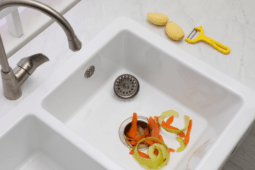Transform Your Backyard with an Affordable DIY Stock Tank Pool
Summer is the perfect time to take a dip and cool off, but not everyone has the luxury of owning an in-ground pool. Enter the stock tank pool, a budget-friendly and trendy alternative that has taken the DIY world by storm. Originally used for watering livestock, stock tanks have found a new purpose as backyard pools. They are easy to set up, require minimal maintenance, and provide a rustic charm that traditional pools simply can’t match.
Ready to take on life with unshakable confidence? Whether you’re aiming to excel in your career, improve your relationships, or conquer DIY projects, NLP Hero’s Confidence Course is your key to success. Click here to start transforming your confidence and be better at everything you do!
In this guide, we’ll walk you through the steps of creating your very own stock tank pool, from selecting the right tank to adding the finishing touches. Whether you’re a seasoned DIY enthusiast or a complete beginner, you’ll find everything you need to know right here.
Choosing the Right Stock Tank Pool
The first step in creating your stock tank pool is selecting the right tank. Stock tanks come in various sizes and materials, so it’s important to choose one that fits your space and needs. Most people opt for galvanized steel tanks, which are durable and have a classic look. When selecting your tank, consider the following factors:
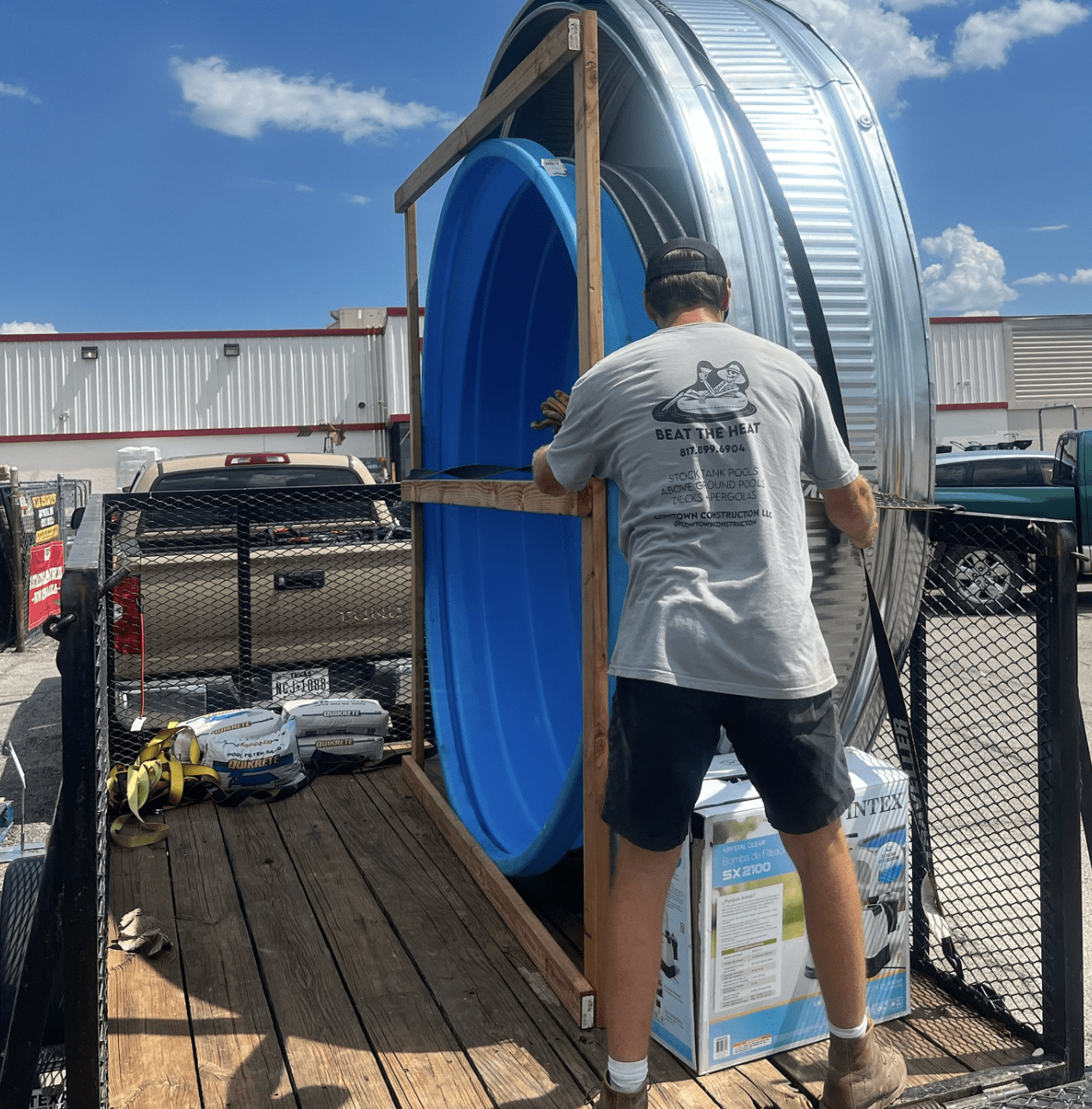
- Size: Stock tanks typically range from 6 to 10 feet in diameter. Measure your available space to ensure the tank will fit comfortably.
- Material: Galvanized steel is the most popular choice due to its durability, but plastic tanks are also available and can be easier to move.
- Depth: Most stock tanks are about 2 feet deep, which is perfect for lounging but may not be suitable for swimming.
Preparing the Site for Your Stock Tank Pool
Once you’ve chosen your stock tank, the next step is to prepare the site where it will be installed. A level surface is crucial to ensure the stability and longevity of your stock tank pool. Follow these steps to prepare your site:

- Clear the Area: Remove any rocks, debris, or vegetation from the area where you plan to place your stock tank pool.
- Level the Ground: Use a shovel and a level to create a flat, even surface. You may need to add or remove soil to achieve this.
- Add a Base Layer: Lay down a layer of sand or gravel to provide additional stability and drainage.
Installing Your Stock Tank Pool
With your site prepared, it’s time to install your stock tank pool. This step involves placing the tank, securing it, and ensuring it is level. Here’s how to do it:
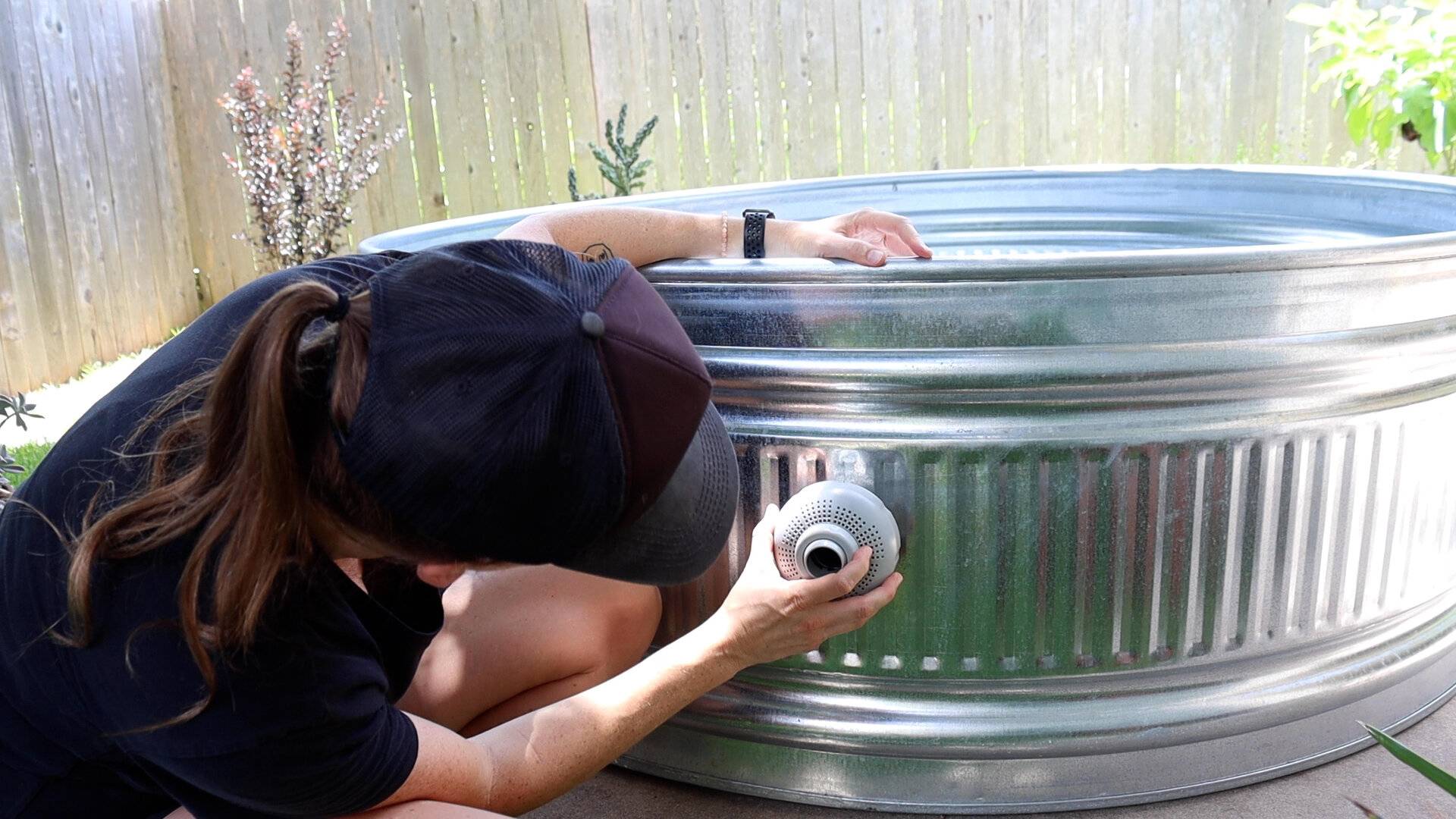
- Position the Tank: Carefully place the stock tank in the prepared area. If the tank is too heavy to move, consider enlisting the help of a friend or using a dolly.
- Check for Level: Use a level to ensure the tank is sitting evenly on the ground. Adjust as necessary to achieve a perfectly level setup.
- Secure the Tank: If you live in an area with strong winds, consider anchoring the tank to prevent it from moving.
Adding Water and Filtration to Your Stock Tank Pool
Now that your stock tank pool is in place, it’s time to fill it with water and set up a filtration system. Proper filtration is essential to keep your water clean and safe for swimming. Here’s what you need to do:
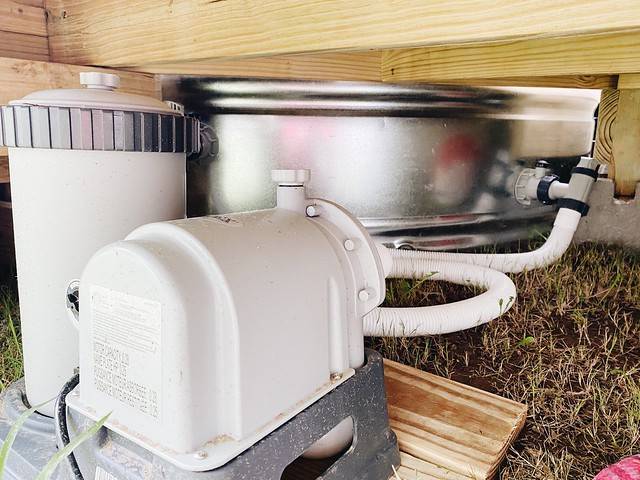
- Fill the Tank: Use a garden hose to fill your stock tank pool with water. Depending on the size of your tank, this may take several hours.
- Install a Filter: Purchase a pool or pond filter that is suitable for the size of your stock tank pool. Follow the manufacturer’s instructions to install the filter and connect it to your tank.
- Add Chemicals: Keep your water clean with pool chemicals such as chlorine. Test the water regularly to maintain the correct chemical balance.
Decorating and Personalizing Your Stock Tank Pool
One of the best parts of having a stock tank pool is the opportunity to personalize it to fit your style. From adding comfortable seating to installing decorative lights, there are endless ways to make your stock tank pool uniquely yours. Here are some ideas:

- Add Seating: Place lounge chairs or benches around the pool for a comfortable seating area.
- Install Lighting: String lights or underwater LED lights can create a magical atmosphere for evening swims.
- Decorate the Surroundings: Use plants, rocks, or other decorative elements to enhance the natural look of your stock tank pool.
Maintaining Your Stock Tank Pool
Maintenance is key to ensuring your stock tank pool stays clean and functional all season long. Regular upkeep will prevent issues such as algae growth and water contamination. Here are some maintenance tips:
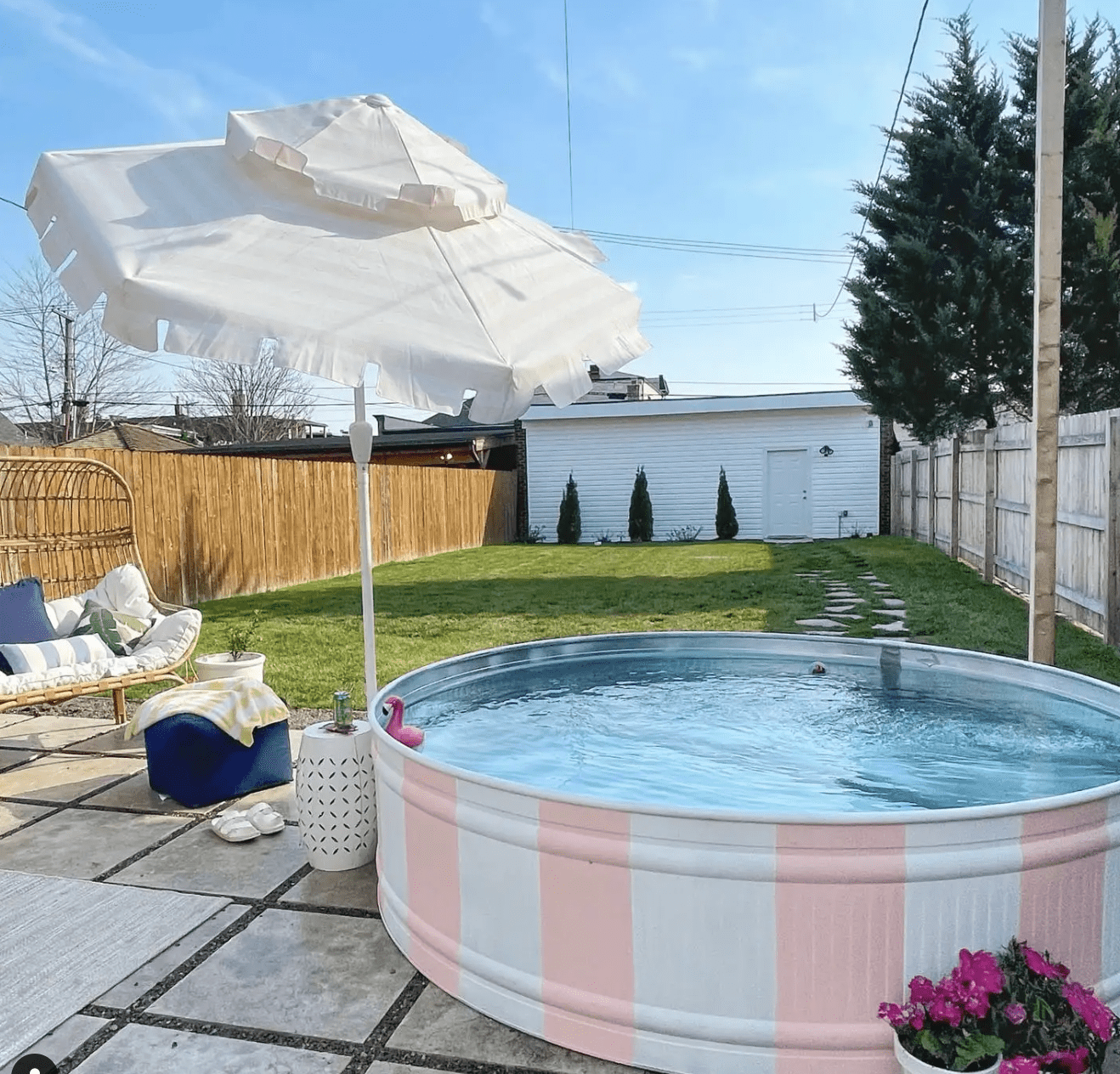
- Clean the Filter: Check and clean your filter regularly to ensure it is working efficiently.
- Skim the Surface: Use a pool net to remove leaves, bugs, and other debris from the surface of the water.
- Check Chemical Levels: Test the water’s chemical levels weekly and adjust as needed to maintain a safe swimming environment.
Related Articles
- Step-by-Step Guide to Building Your Own DIY Sauna
- How to: Build a Pergola in Your Own Backyard
- How to Move a Shed Around Your Backyard
Creating a stock tank pool is a fun and rewarding DIY project that can provide endless summer enjoyment. With the right preparation, installation, and maintenance, your stock tank pool will be a backyard oasis for years to come.
Ready to start your next project? Join our DIY community to receive tool tips, how-to guides, and exclusive creative insights. Subscribe to the ManMadeDIY newsletter now! Click here to unlock a world of hands-on inspiration.
Frequently Asked Questions (FAQs)
Can I heat my stock tank pool?
Yes, you can heat a stock tank pool using a solar cover, a pool heater, or even a DIY solution like a black hose left in the sun. However, be mindful of the tank material, as excessive heat can affect galvanized steel.
How long does it take to set up a stock tank pool?
The setup time varies depending on the size of the tank and the complexity of your site preparation. It can generally take anywhere from a few hours to a full day.
Do stock tank pools require a lot of maintenance?
Stock tank pools require regular maintenance, including cleaning the filter, skimming debris, and checking chemical levels. However, they are generally easier to maintain than traditional pools.
Can I use saltwater in my stock tank pool?
Yes, you can use salt water in a stock tank pool, but it may cause corrosion in galvanized steel tanks over time. Consider using a plastic tank if you prefer a saltwater setup.
How do I winterize my stock tank pool?
To winterize your stock tank pool, drain all the water, clean the tank thoroughly, and store it in a dry place. If leaving it outside, cover it securely to protect it from the elements.







